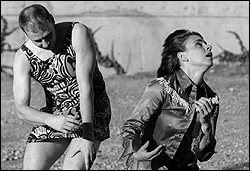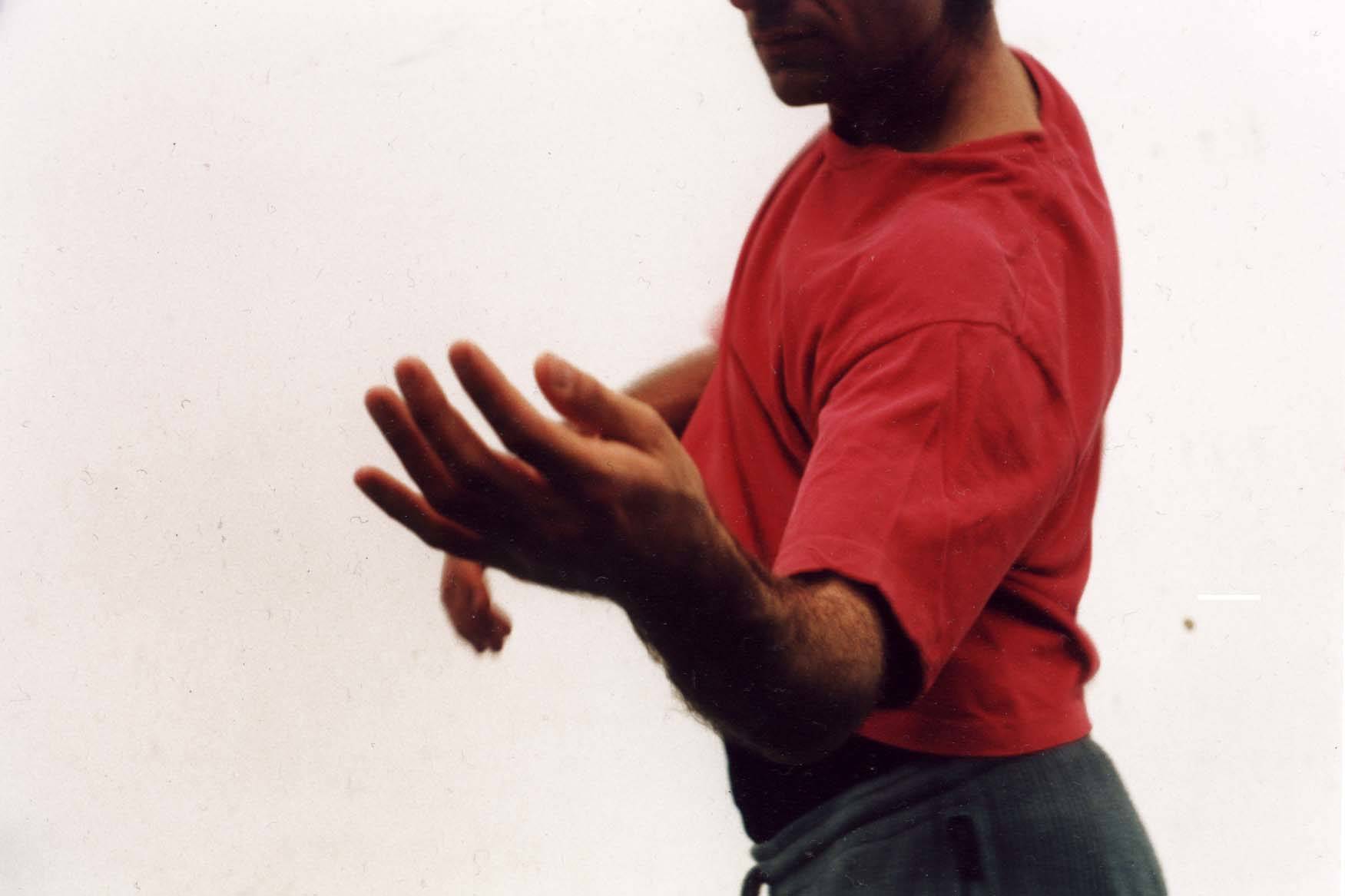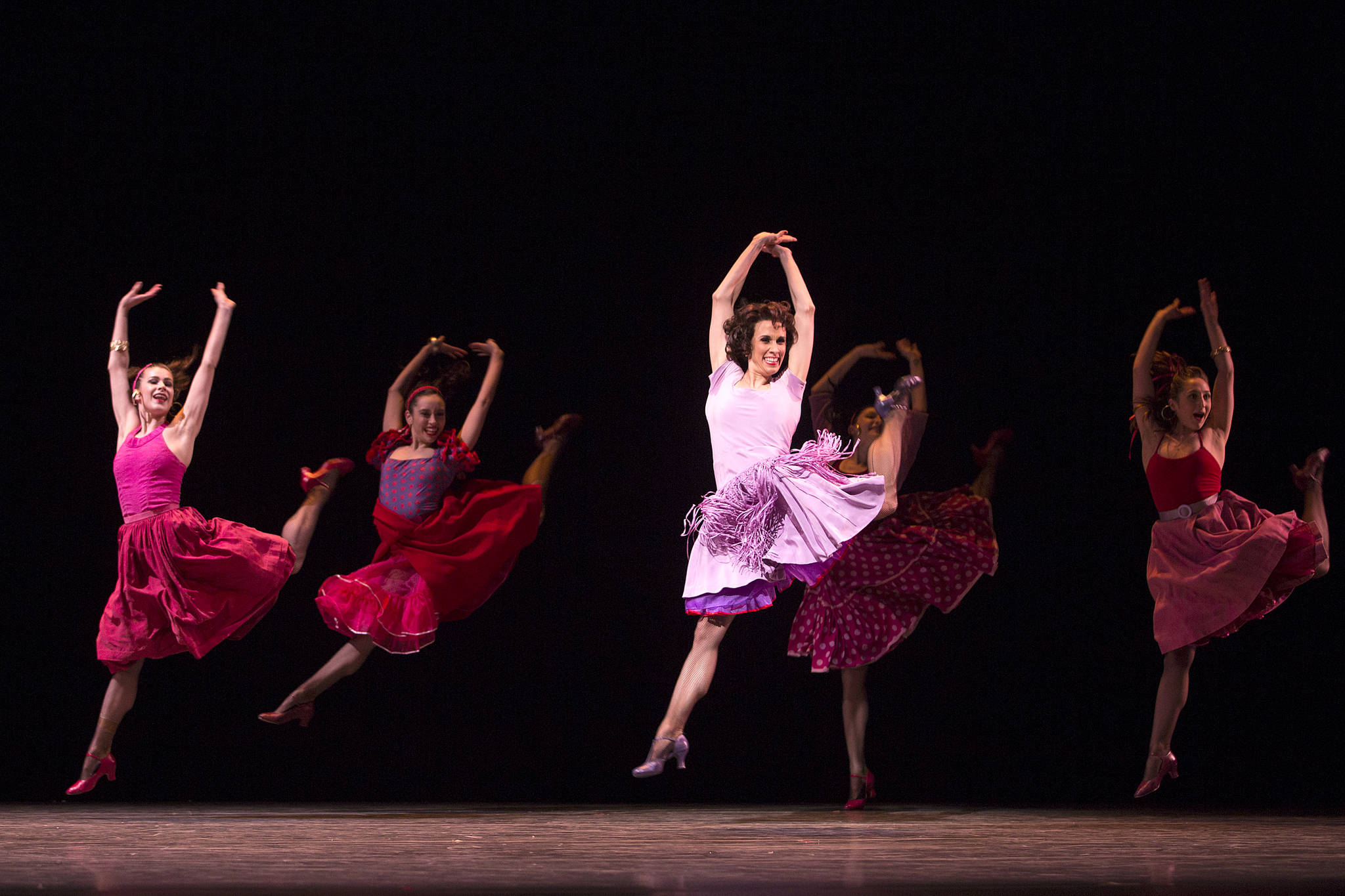It sounds odd coming from a choreographer, but as KT Niehoff was preparing to make her new work, she wasn’t that sure movement could say everything she wanted to express.
“Maybe it’s because I have a theater background, but there’s something about me that doesn’t quite believe in dance,” she muses. “Is it enough—just dance, just the pure physical aesthetic? Is it enough to convey something that feels substantive enough not to be left in the void or in the dark or abstract?”
That’s a familiar question for Niehoff’s Lingo dancetheater and its audience. Previous works have drawn as much from the world of text and theater as they have from dancing, especially the verbal cacophony of 2003’s Speak to Me, with its long monologues and loquacious sound score by Reggie Watts. But for Relatively Real (8 p.m. Thursday, May 12–Saturday, May 14, at On the Boards; 206-217-9888), Niehoff decided to start the process by returning to the body and seeing exactly what movement could do.
“I just wanted to leave the concepts behind, to understand my movement aesthetic and understand what my body does,” she explains. “[I wanted to understand] what interests me about movement, and learn how to articulate that to the people who are dancing with me. We did that all last year—we didn’t focus on the concepts of the piece at all. And that’s really a departure, a fundamental shift of philosophy. I feel like the physical material in this piece is much more substantive than anything I’ve done before, and I’m really excited about that.”
Still, though, this enhanced physicality is in service of a larger theme.
“Ultimately, there is a big concept, and it’s been almost heartbreakingly impossible,” she says. “I mean, ‘identity and perception?’ I may as well make a piece about ‘people.’ It’s a ridiculous premise in a lot of ways.”
Based on a recent rehearsal peek, the work follows what might seem like a simplistic arc, but on the way it zigzags through a variety of topics, including gender stereotypes and social relationships. The main thread is always about personal identity, about how much of yourself you reveal at any particular time, but the journey is full of little side trips. And Niehoff still makes good use of her theatrical roots, collaborating with animator Stefan Gruber, scenic designer Alex Korahais, composer Adam McCollom, lighting designer Julie Keenan, and costumer Alex Martin.
“All my work has a singular visual statement to it,” Niehoff says. “I really didn’t want to project movies—video installation and dance is done very poorly and very often. It was important to me that we had some sort of integration.”
This integration led to a group of lovely, movable set pieces that look rather like flattened icebergs, white waves that fit together into an example of Renaissance forced perspective, but that also roll around the stage, creating alleys and tunnels that influence the dancers’ traffic patterns. They are both projection surface and architecture. In terms of scale, Niehoff thinks Relatively Real is the largest thing she’s made so far.
“There’s a lot of animation in the work,” she says. “There are a lot of costumes, there’s this big set rolling around. Some days, it feels really cool—there are all these creative people in the world, and some of them are working on this—and other days, it’s like, ‘What is going on?'”
Over the 10 years that she has been making dances, Niehoff’s works have been getting larger and larger—a trend that she doesn’t think she’ll be able to continue.
“I’m not going to be able to do this scale again for a while,” she admits. “It’s not going to sustain. You can say, ‘Wouldn’t it be great if we could just keep rehearsing?’ but that doesn’t work unless you’re an institution. This group of dancers has been working three afternoons a week since 2002. That’s a long time for all of us. It affects how we’ve constructed our days and prioritized our dancing lives. Next, I want to make a solo for myself in my garage, or a shorter, more intense process. I think I have come out through the other side believing in the body and wanting to pursue that in a quieter way.”








